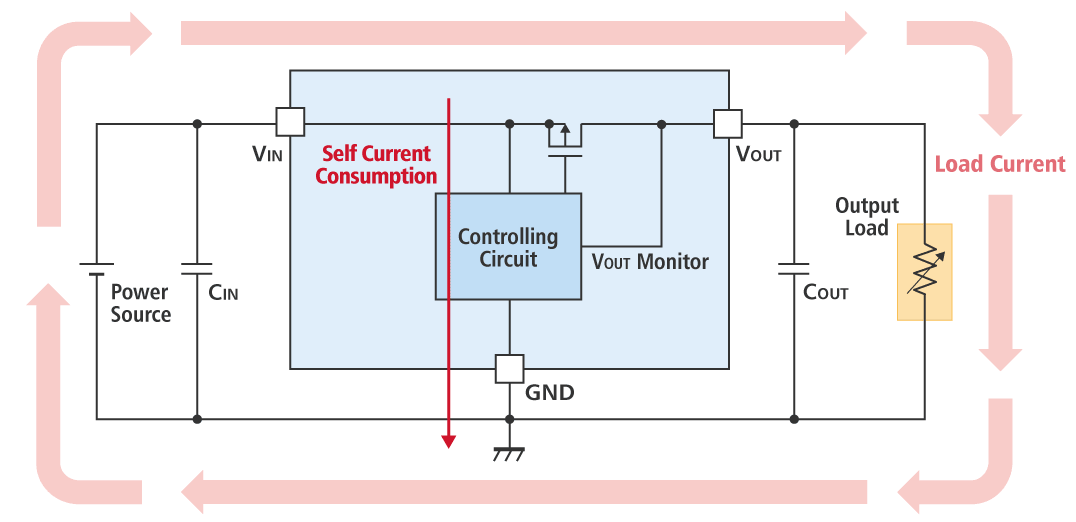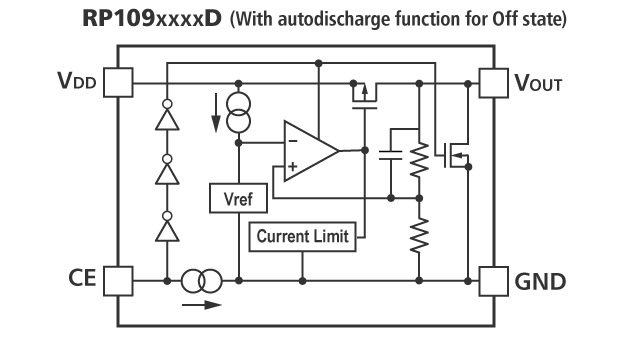What is the difference between LDO's shutdown current(1) and quiescent current(2)? How much voltage does an LDO regulator output at its shutdown mode?
LDO Linear RegulatorsDC/DC Switching RegulatorsHow to use
LDO's quiescent current is an operating current for the LDO itself. It does not include the current supplied to or driving other devices.
As for the input current, 100% load current also flows from input power source. In a CMOS-based linear regulator, as shown in the figure 1, the supply current is flowing to the LDO controlling circuit, equal to input current minus load current.

Figure 1. Quiescent current of IC itself
-
On the other hand, generally, LDO has an individual pin for control On and Off of the LDO. As shown in the Figure 2, CE is the chip enable pin and control On and Off of the LDO. Shutdown current(1) is the current at shutdown. (At shut down, LDO turns off by CE control).
At the shutdown state, the controlling circuit becomes off, so the output voltage also becomes 0 V (OFF).
If output discharge function is included in the LDO, output voltage is pulled down to GND by the discharge transistor and discharged by the load. Otherwise, the output voltage is pulled down with LDO's internal high divider resistors and discharged by the load. -

Figure 2. RP109 series Block Diagram
- (1)Depending on the product, it is defined as "standby current".
- (2)Depending on the product, it is defined as "current consumption".
Related Products
If you still have questions.
-
Search Other FAQs
-
Enter your question via our web form.







